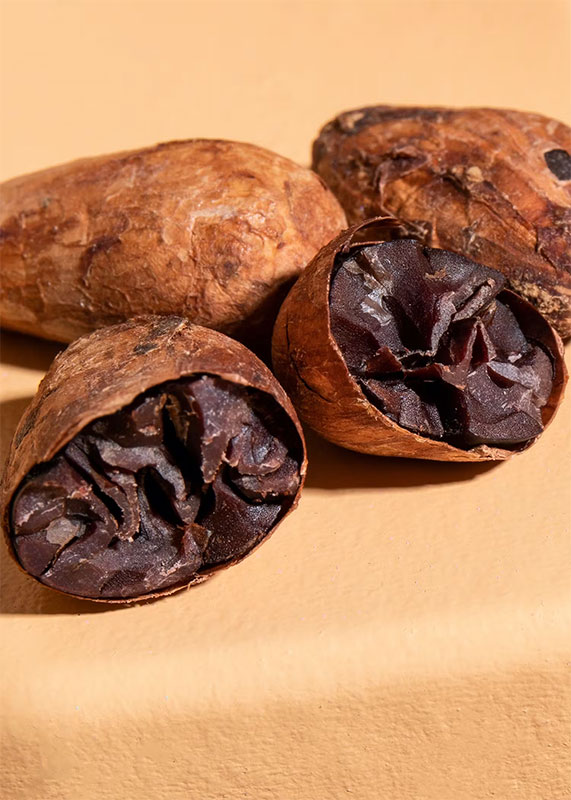Nowadays, cocoa production and its supply chain is one of the most important in the world thanks to its family cultivation and the logistics necessary for the transportation, marketing, production and distribution of raw material and products. derivatives. However, the cocoa processing chain has remained unchanged for 150 years. The steps to transform the seeds into the final products (for example, chocolate, butter and cocoa liqueur) consist of harvesting, fermenting, roasting, shelling, grinding and spraying.
In each of these phases a substantial residual biomass is generated.
The cocoa fruits are harvested after ripening and the pods are opened with a sledgehammer, knife or machete. The use of sharp objects requires considerable experience and skills to avoid damaging the seeds.
A longitudinal cut is made in the peel of the pod to expose the cocoa beans and pulp. The cocoa beans, together with the surrounding mucilaginous pulp, are distributed in piles for further fermentation. The pod shells are then disposed of directly into the ground. The pulp, in contact with metal tools or impurities, is exposed to microorganisms (for example, lactic acid bacteria, acetic acid bacteria, yeasts and filamentous fungi), which promote numerous physical and chemical changes in both the pulp and the beans. Fermentation is usually done for 8 days, exhibiting a heterogeneous group of microorganisms and variable metabolite peaks (i.e., ethanol, lactic acid, acetic acid). In the post-harvest phase, excess juice, which is the result of pulp-pectin degradation at low pH and negative pressure, is drained through cracks in the fermentation boxes and thrown into the ground.
Are then processed on an industrial scale, generating cocoa products (for example, cocoa powder, butter and liqueur). The cocoa beans undergo thermal shock to remove the surrounding shells and are subsequently subjected to a flow of air (sieve), which favors their separation from the purified cotyledons (nibs), allowing for homogeneous roasting.
The grains are roasted at temperatures between 120 and 150 ° C with variable heating ramps depending on the level of ripeness of the grain and the desired final product.
The high roasting temperatures favor a series of complex Maillard reactions, which lead to the conversion of free amino acids and the reduction of sugars into aldehydes, pyrazines and higher alcohols which directly influence the development of cocoa aromas.











